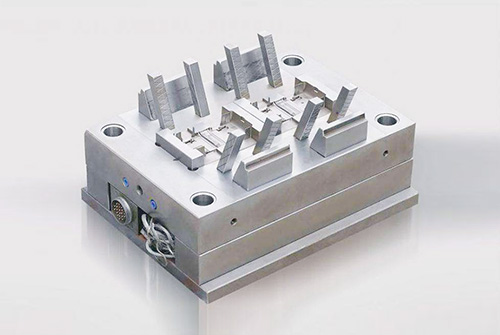Plastic die steel performance requirements as the manufacturing industry fast development, the plastic mold is an indispensable tool in the plastic molding processing, in the mold production and the proportion of total increase year by year, with the development of high-performance plastics and continuous production, more and more types of plastic products, expanding use, products to the motors, large-scale and complicated development. With the development of high speed molding production, the working conditions of molds are becoming more and more complicated.
1) Abrasion and corrosion of cavity surface
The plastic melt flows in the mold cavity with a certain pressure, and the solidified plastic parts come out of the mold, causing friction on the molding surface of the mold and wear. The friction between the mould and the material is the root cause of the wear failure of the plastic mould. However, the specific form of wear and wear process is related to many factors, such as pressure, temperature, material deformation speed and lubrication in the working process of the die. When the material used in the plastic mold and heat treatment is not reasonable, the mold cavity surface hardness is low, wear resistance is poor, its performance is: the cavity surface due to wear and deformation of the size of the out-of-tolerance; The roughness value becomes higher and the surface quality deteriorates due to pulling. Especially when the use of solid materials into the mold cavity, it will exacerbate the cavity surface wear. In addition, the plastic processing contains chlorine, fluorine and other components are decomposed by heat into corrosive gases HC1, HF, so that the plastic mold cavity surface corrosion wear, resulting in failure. If wear is accompanied by wear damage, so that the cavity surface coating or other protective layer is damaged, will promote the corrosion process. Two kinds of damage cross action, accelerated corrosion - wear failure.
2) Plastic deformation failure
Plastic deformation failure can be caused by pressure and heat on the surface of plastic mold cavity, especially when small molds work on large tonnage equipment, they are more likely to generate overload plastic deformation. The strength and toughness of the materials used in the plastic mould are insufficient, and the deformation resistance is low. The other reason of plastic deformation failure is that the hardening layer on the mold cavity surface is too thin, the deformation resistance is insufficient or the working temperature is higher than the tempering temperature and phase change softening occurs, which makes the mold fail early.
3) fracture
The main reason for the fracture is the structural stress and thermal stress caused by the difference in temperature or the insufficient tempering. At the service temperature, the residual austenite is converted into martensite, causing local volume expansion and resulting in the structural stress inside the mold.



 skype
skype